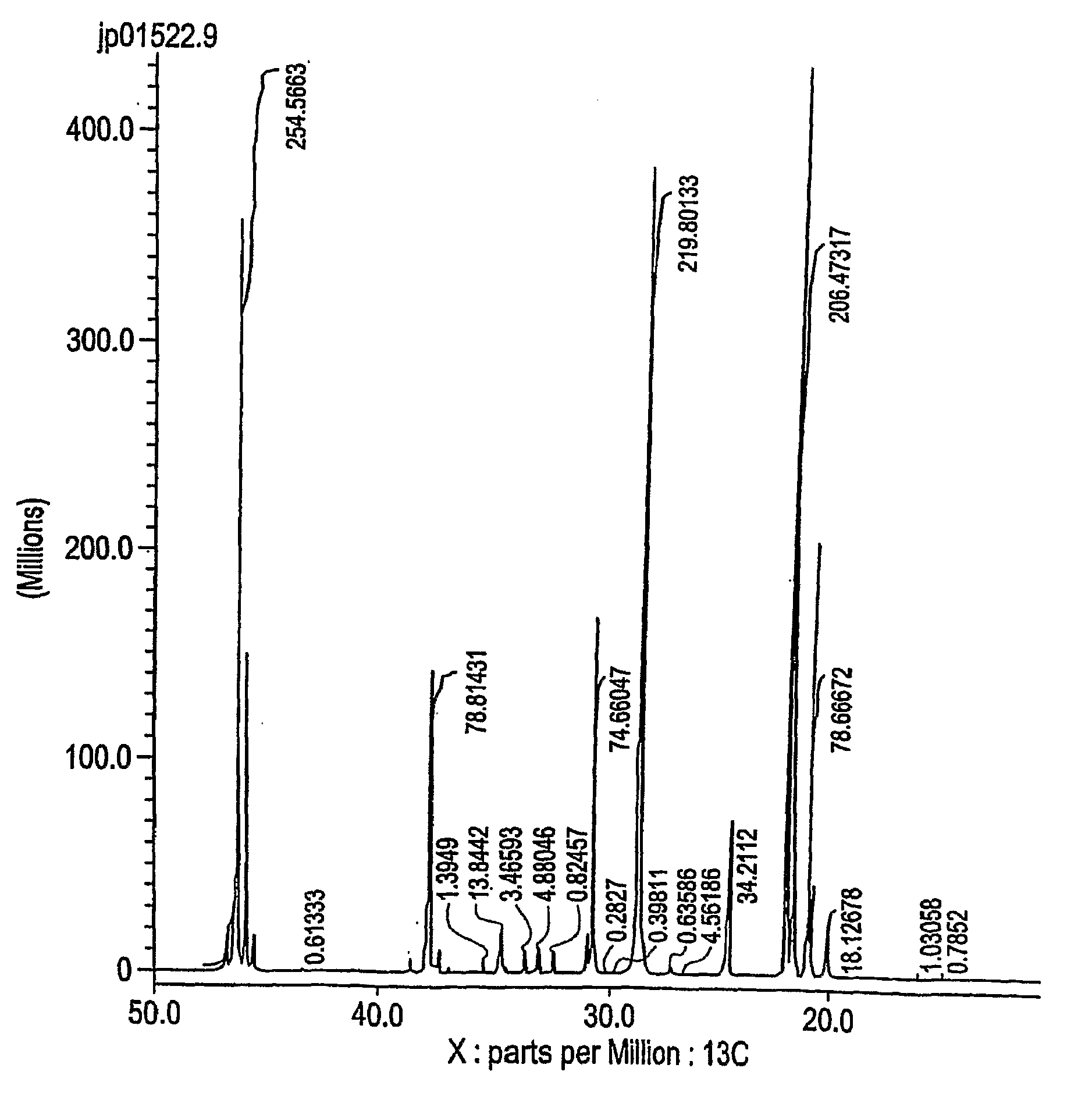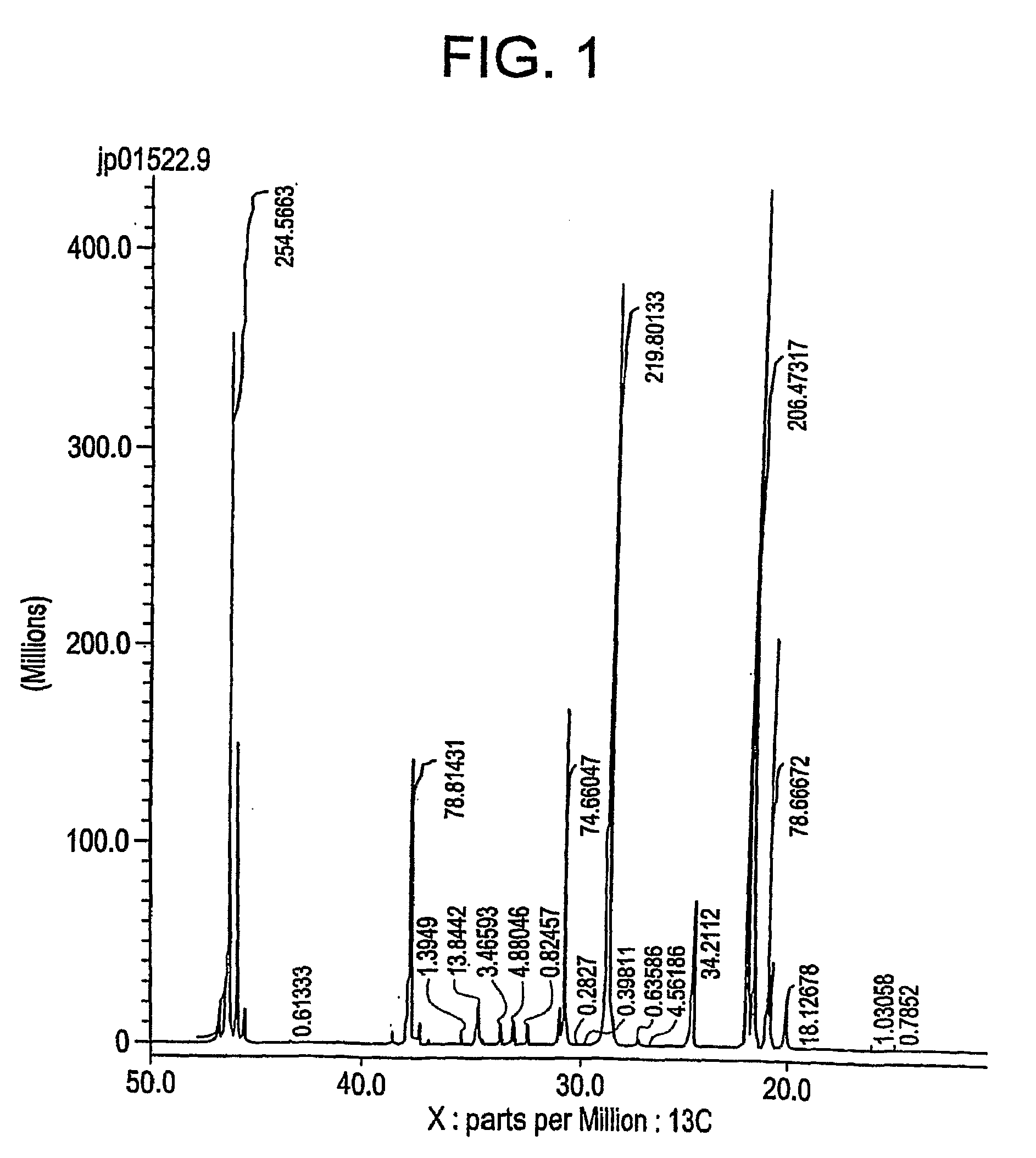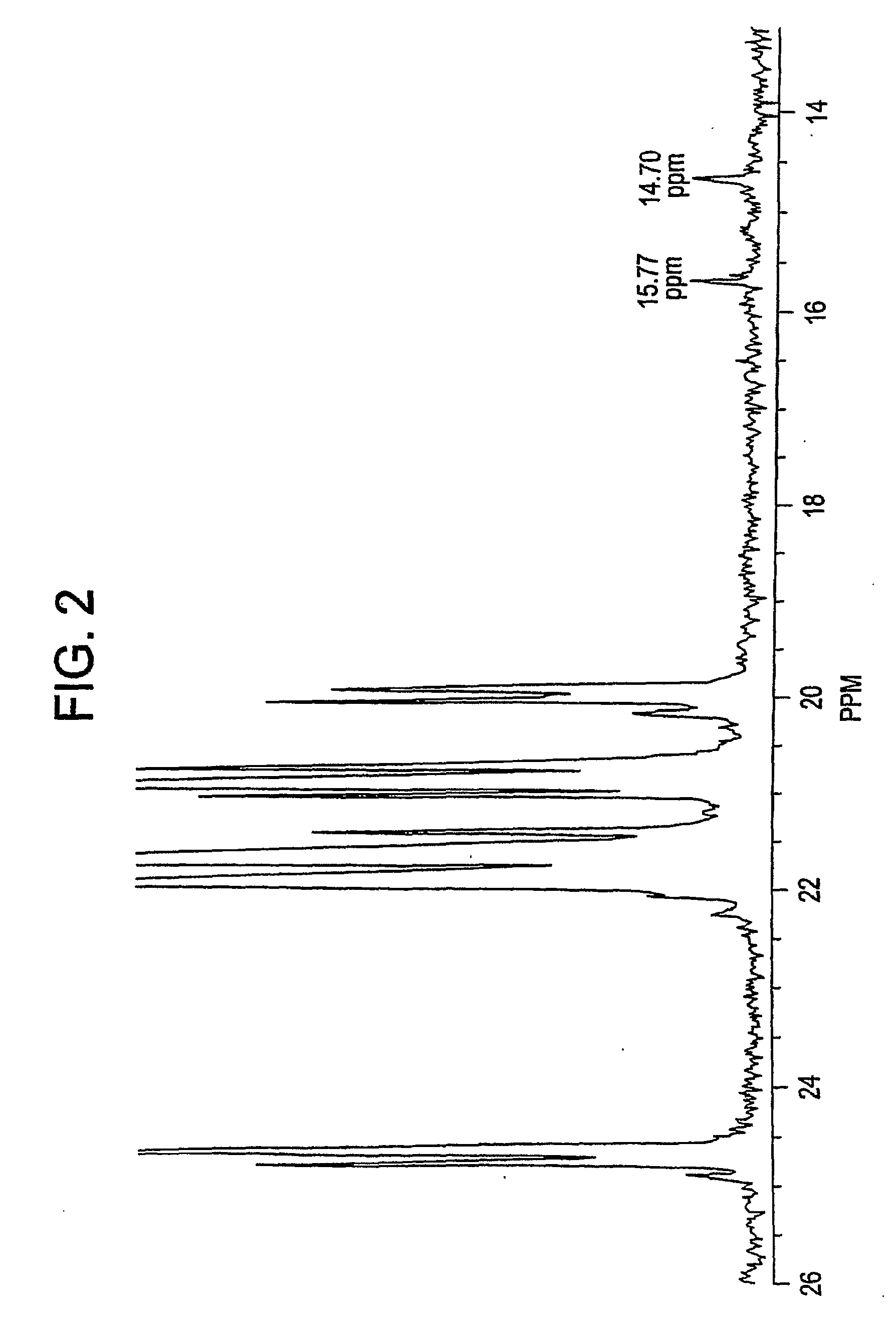Propylene-Based Elastomeric Composition
a technology of elastomer composition and polyolefin, which is applied in the field of polyolefin elastomer composition, can solve the problems of difficult adhesion of elastomers, difficult to develop full crystallinity, and difficult to achieve the full crystallinity of elastomers, etc., and achieves acceptable optical properties, low haze, and high gloss.
- Summary
- Abstract
- Description
- Claims
- Application Information
AI Technical Summary
Benefits of technology
Problems solved by technology
Method used
Image
Examples
example 2
Metallocene Catalyzed
[0094]This example demonstrates the calculation for propylene-ethylene copolymer made using a metallocene catalyst synthesized according to Example 15 of U.S. Pat. No. 5,616,664, using both a conventional interpretation of Koenig J. L. (Spectroscopy of Polymers American Chemical Society, Washington, D.C., 1992) and the matrix method, as described above. The propylene-ethylene copolymer is manufactured according to Example 1 of US Patent Application 2003 / 0204017. The propylene-ethylene copolymer is analyzed as follows. The data is collected using a Varian UNITY Plus 400 MHz NMR spectrometer corresponding to a 13C resonance
[0095]Isotacticity at the triad level (mm) is determined from the integrals of the mm triad (22.70-21.28 ppm), the mr triad (21.28-20.67 ppm) and the rr triad (20.67-19.74). The mm isotacticity is determined by dividing the intensity of the mm triad by the sum of the mm, mr, and rr triads. For ethylene copolymers the mr region is corrected by su...
examples
[0133]The following resins are utilized in the examples:
[0134]PP-1 is a 3.2 gram / 10 minute melt flow rate homopolymer polypropylene available from The Dow Chemical Company under the grade designation H105-03NA having a flexural modulus of 1600 MPa (by IS0178), 35% haze (by ASTM D1003), and 45° gloss (by ASTM D245).
[0135]E / O-1 is an ethylene-1 octene substantially linear polyethylene available from The Dow Chemical Company under the grade designation AFFINITY PL1280 having an ethylene content of 81 weight percent, an octene content of 19 weight percent, a 0.900 g / cc density, a 6 grams / 10 minutes melt index, an I10 / I2 of 8, a molecular weight distribution (Mw / Mn) of about 2.3 and exhibits a heat of fusion of 95 Joules / gram and a 2% secant flexural modulus of about 78 MPa according to (ASTM D790).
[0136]E / H-1 is an ethylene-1 hexene substantially linear polyethylene having an ethylene content of about 84 weight percent, a hexene content of 16 weight percent, a 0.903 g / cc density, a 4.8 ...
PUM
| Property | Measurement | Unit |
|---|---|---|
| wt % | aaaaa | aaaaa |
| wt % | aaaaa | aaaaa |
| wt % | aaaaa | aaaaa |
Abstract
Description
Claims
Application Information
 Login to View More
Login to View More - R&D
- Intellectual Property
- Life Sciences
- Materials
- Tech Scout
- Unparalleled Data Quality
- Higher Quality Content
- 60% Fewer Hallucinations
Browse by: Latest US Patents, China's latest patents, Technical Efficacy Thesaurus, Application Domain, Technology Topic, Popular Technical Reports.
© 2025 PatSnap. All rights reserved.Legal|Privacy policy|Modern Slavery Act Transparency Statement|Sitemap|About US| Contact US: help@patsnap.com



